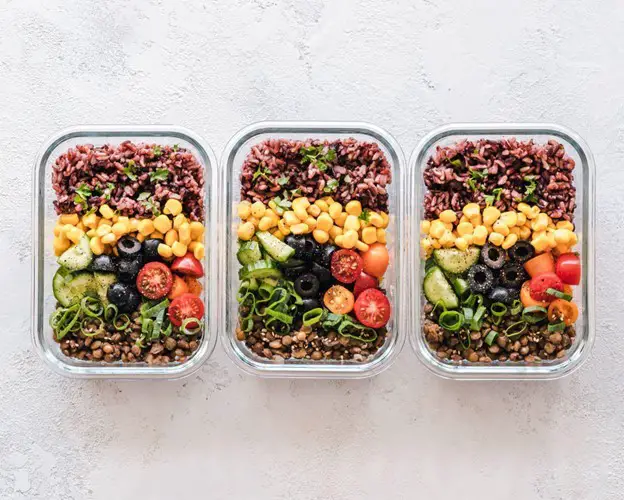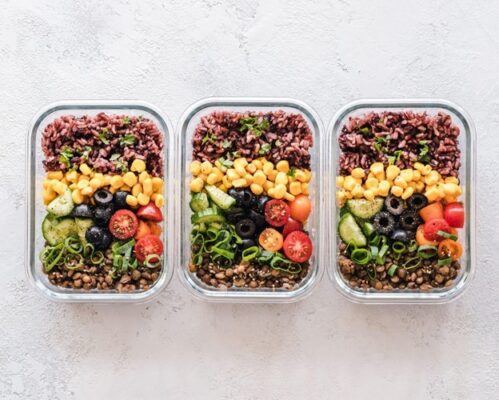Tips to plan meals on a tight budget guide, Online restaurant firm advice, Nutritious wholesome meals
Tips To Plan Meals On A Tight Budget
16 May 2022
Whenever it comes to serving your household on a budget without sacrificing nutritious, wholesome meals, the issue is real. It’s all too easy to feed your kids boxed mac & cheese (especially when it’s cheap and their favorite dish), but as the mother and cook, it’s up to you to maintain the healthy car on the road.
And, as convenient as going out for dinner or ordering takeout is, it’s neither the healthiest nor the cheapest option – particularly when your kids insist on ordering fries as a side dish.
Meal prepping is fantastic for time-saving, but it should also save you money in the long run. Meal preparation can be a difficult undertaking when you’re on a tight budget. Use this advice to prepare meals on a low budget if you don’t have that much supermarket budget to compete with and aren’t sure where to begin.
1. Know What Food You Already Have
Make a note of everything you have in your pantry, refrigerator, freezer, and deep freezer. Now is a wonderful time to pull out that very old ketchup and applesauce that you have stored from five years ago. You might find attractive custom printed paper food trays full of old dry nuts or chillies.
When you find leftovers stuffed in the back of the fridge, you may realize that you also have a lot more additional storage containers than you expected. By searching over your present food supply, you may ensure that you are not purchasing duplicates of items you already own.
Cleaning out the refrigerator also allows you to determine which meals were neglected after they were prepared. Even if you’re on a budget, you want to appreciate the meal you’re eating.
2. Make A Mini Grocery List
Because you’re consuming stuff you already have, your first month’s shopping spend may be modest. Only buy supplemental things to help you finish the food you currently have.
For example, cilantro and lime may be on your grocery list to prepare a pot of spicy rice using the rice you already have.
Getting rid of the old food removes the mental obstacle and provides a fresh start. You’re obviously used to approaching the pantry and finding that very same can of beans, then deciding there’s nothing to eat and ordering pizza. An unfilled pantry is a blank canvas that you may fill with budget-friendly, purposeful things.
3. Eat The Food That Is There
We are biologically built to want to stockpile major use stuff like toiletries, seasonal clothing such as jackets from your favorite custom jacket manufacturer or food.
You stock up in case of adversity. It’s a self-preservation strategy, similar to putting on weight in the winter, for when supplies are few. Food saved in the freezer is equal to the stored energy, which boosts survival rates.
With almost all of our contemporary conveniences, such as grocery stores that sell bananas all year, there is no more a need to keep significant quantities of food in the pantry.
Making meals that use only the products you want will help you keep your meal plan to a minimum. Another advantage is that you won’t be forgetting about the storage items until they’re past their expiration date.
4. Decide What To Buy In Bulk
Making a grocery list is an important part of meal preparation. Some things are best purchased in bulk, notably if you belong to a warehouse club such as Costco.
If sandwiches are on the menu this week, buying a big slice of bread and a tub of hummus could save you money. Rice and dry beans, for example, can be purchased in bulk for very low prices.
Going in with a list and assuring the item has always been something your family will have to use up before it goes rotten is the key to shopping in bulk.
5. Choose Inexpensive Foods
Some grocery items are more affordable than others. Meat, fresh organic food, and dairy are usually the most costly. This is because their preservation demands high quality packaging which takes place at reputable packaging machine factories.
Instead, choose less-priced alternatives. Dinners with dried beans and lentils are an excellent source of protein. Oats are far less expensive than cereal boxes and provide a substantial, healthful breakfast.
Even if you wish to continue eating organic vegetables, frozen organic stuff is less expensive and just as healthy as fresh.
6. Buy Only What’s On Sale
The weekly food fliers are an excellent source of information about store specials. You may plan entire recipes around utilizing only the things on sale this week.
If you’re a brand loyalist, did you know you can request coupons directly from the company? Here are the greatest methods for receiving free coupons in the mail. You can go online and grab your Subway promo codes to enjoy discounts on your favorite meals. Taking advantage of such deals ensures you can indulge in delicious food while staying within your budget.
7. Find Simple Recipes
It’s not a good idea to try out intricate recipes while you’re getting into the swing of meal planning. Food is meant to nourish you, not to entertain you.
One-pot dinners are simple to prepare and will make cooking much easier after a long day at work.
The week’s meals are written on a dry erase board in the kitchenette to keep them in mind. It also eliminates the daily “What’s for dinner?” questions that everyone enjoys hearing.
Tips to plan meals on a tight budget Conclusion
The more you plan ahead of time, the less difficult it gets. Weekly mainstays like spaghetti on Mondays and nachos on Fridays are fine. Food is no exception to the comfort that can be found in a routine.
Comments on this guide to Tips to plan meals on a tight budget article are welcome.
Restaurants
Restaurants Posts
9 Things Every Restaurant Owner Should Know
Choose the Perfect Bar Stools for your Restaurant
Top 6 Reasons to Consider Investing in Pizza Franchise

Buildings
Café Architecture
Comments / photos for the Tips to plan meals on a tight budgetadvice page welcome






